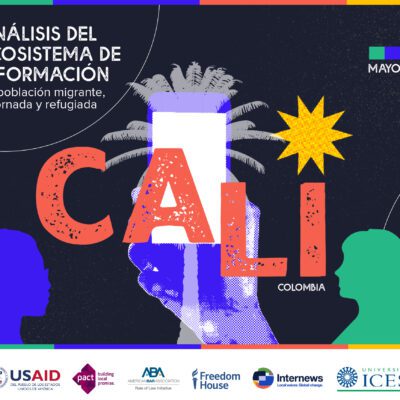Internews’ Information Ecosystem Assessments (IEAs) are designed to identify how information flows through communities. Whether it be by word of mouth, through trusted community leaders, local media, social media and/or other “info-mediaries”, the point of doing such assessments is to identify the most effective formats and channels to use when designing two-way communication strategies and feedback loops to meet the information needs identified in the Information Needs Assessment.
Information Ecosystem Assessments recognize that media outlets are just one source of information in communities, and so they seek to understand local information ecosystems more broadly from the point of view of the information consumer. An IEA assesses all the factors that govern information needs, access, sourcing, movement, uptake and impact in an ecosystem in much greater depth. By focusing not only on the capacity of supply-side media outlets, but also on the community demand side of the information ecosystem, IEAs can examine the dynamic human-centered aspects of information flows, paying attention to informal, cultural, and social media factors that can disrupt/corrupt community information flows with rumours, misinformation, and propaganda.
A handy way to think about IEAs is as a mapping exercise – hence we often talk about IEAs as “mapping the information ecosystem”. Information Ecosystem Assessments provide us with a map of the landscape across which we need to move information from A to B – from sources to consumers – and from B back to A. The IEA methodology comprises 8 components that serve to analyze the dynamics of any given information landscape.
Eight components of the IEA methodology
- Information needs – are the information needs of all groups being served?
- Information landscape – what infrastructures are in place to support information production and flow?
- Production and movement of information – who generates information and how does it move?
- Dynamic of access – what are the power structures in the environment and how can they affect how the information flows?
- Use of information – what do people do with the information they receive?
- Impact of information – what impact does this information have on the community?
- Social trust – whose information do individuals trust?
- Influencers in the community – which voices are loudest or most influential?
IEAs can be leveraged to design adaptive programming that is consistently informed by community input and feedback throughout the project life-cycle. As a central feature of project design, the IEA enables the establishment of dynamic community information feedback loops between beneficiaries, infomediaries and service providers. These feedback loops in turn provide qualitative, evolving insights into the drivers of stigma, discrimination, and ingrained social norms, track and evaluate social and cultural factors that act as barriers to accessing and delivering quality services and provide real-time monitoring and evaluation of community engagement.





